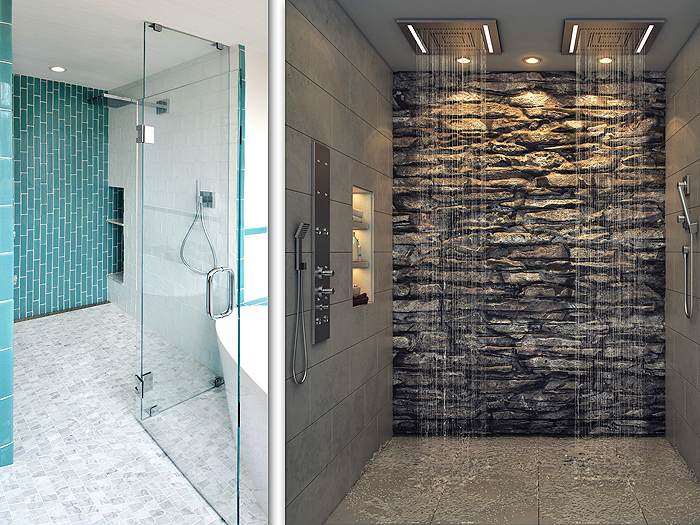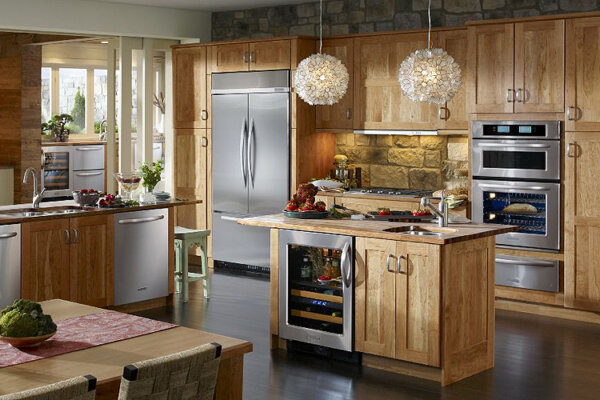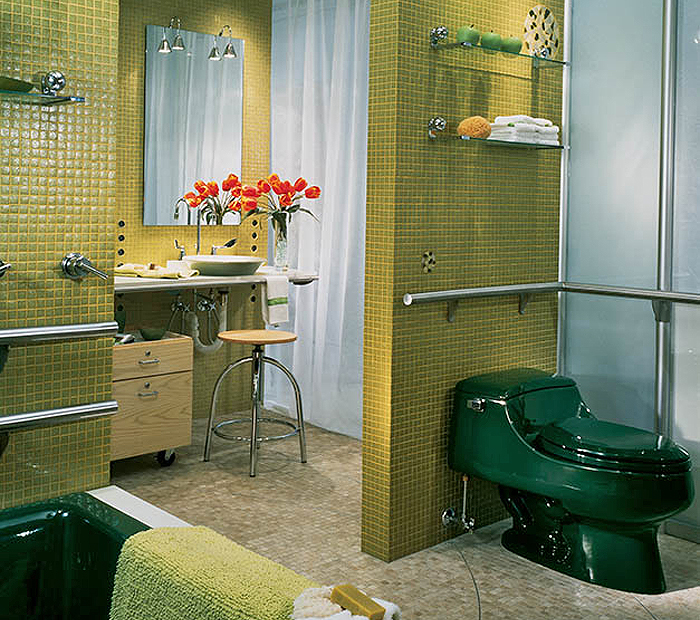The Universal Appeal of Universal Design
Home buying and remodeling trends show that many homeowners have a strong desire to stay in their own homes for as long as possible as they age. Incorporating the features of “Universal Design” into a home remodeling project will broaden its accessibility, usability and safety and create living spaces that are more welcoming to everyone from very young children to the elderly, including people with strength, mobility and vision issues.

Shower photos courtesy The Kitchen & Bath Industry Show (KBIS®) and Emerald Expositions, Inc.
Barrier-Free and Beautiful
Kitchen and bath design today is at the forefront of fully embracing the principles of Universal Design. One popular bathroom element is the curbless, barrier-free shower. It’s a practical shower solution that is also elegant in appearance. With the floor sloping gently toward the drain, there is no need for a curb between the shower enclosure and the dry side of the bathroom. And those convenient under-counter kitchen appliances that you’re seeing all over? They are also very Universal Design-friendly!
 Photo courtesy Jenn-Air.
Photo courtesy Jenn-Air.
How is Universal Design different from just making accommodations for elderly or disabled homeowners and visitors?
Although assistive features such as ramps and grab bars can be included, Universal Design doesn’t just mean “wheelchair accessible.” The focus is much broader. Sometimes Universal Design is called “design for all” or “inclusive design.” With Universal Design, we create spaces that are usable and effective for everyone, no matter what their age or physical abilities. Even younger children benefit from reachable light switches and floors that aren’t slippery. Moreover, we recognize that beauty is as important as function, so a home that incorporates Universal Design will not only be stylish and aesthetically pleasing, but the features can also be practically invisible – except for the fact that the home is an especially comfortable and convenient place to live or visit.
Not everyone needs all the modifications that are available, but you should consider including features that will:
- Compensate for a reduced range of motion
- Compensate for reduced strength
- Improve safety
- Assist reduced mobility and agility
- Improve lighting
 Photo courtesy Kohler Co.
Photo courtesy Kohler Co.
What are some examples of Universal Design I might want to include in my home?
The Center for Universal Design has established certain principles that are common features in Universal Design, including flexibility, simplicity, comfort, and ease of use. We can incorporate these into our clients’ homes in ways that both improve livability and enhance beauty.
Some of the features that a home remodeled using Universal Design might have are:
- Entries and Doorways: at least one no-step entry, wider doorways and halls, interior thresholds no higher than 1/4″, increased lighting
- Kitchen: lazy susans, pullout shelves, automatic (hands-free) faucets, varying counter heights, wall-mounted ovens
- Bathroom: lever-style faucet handles, detachable hand-held showerheads, curbless walk-in showers, anti-scald devices on sinks, tubs and showers
- Bedroom: light switches within easy reach of the bed, adjustable closet rods
Other general features throughout the home may include lever-style door handles; light switches and electrical outlets reachable from a seated position; adequate task lighting and increased lighting on stairways; and flooring materials that are hard, even surfaces or low pile carpeting.
We can help you with Universal Design in your home
Remember, the whole concept of a “universally” designed home is that it works well for everyone: young or old, able or disabled, and all those in between. If you have any questions about Universal Design or you’d like to know more about how it can improve your home and lifestyle, please contact us and we will help you decide which features might be appropriate for you and your family.
Universal design is very important for every part of your home and especially if you are doing a kitchen remodel or bathroom remodel.
Save
Save
Save
Save
Save
Save
Save
Save
Save
Save
Save
Save
Save
Save
Save